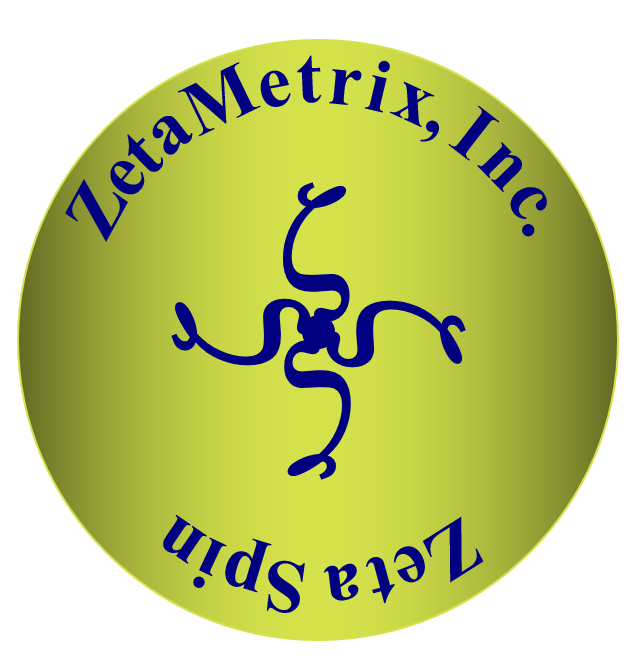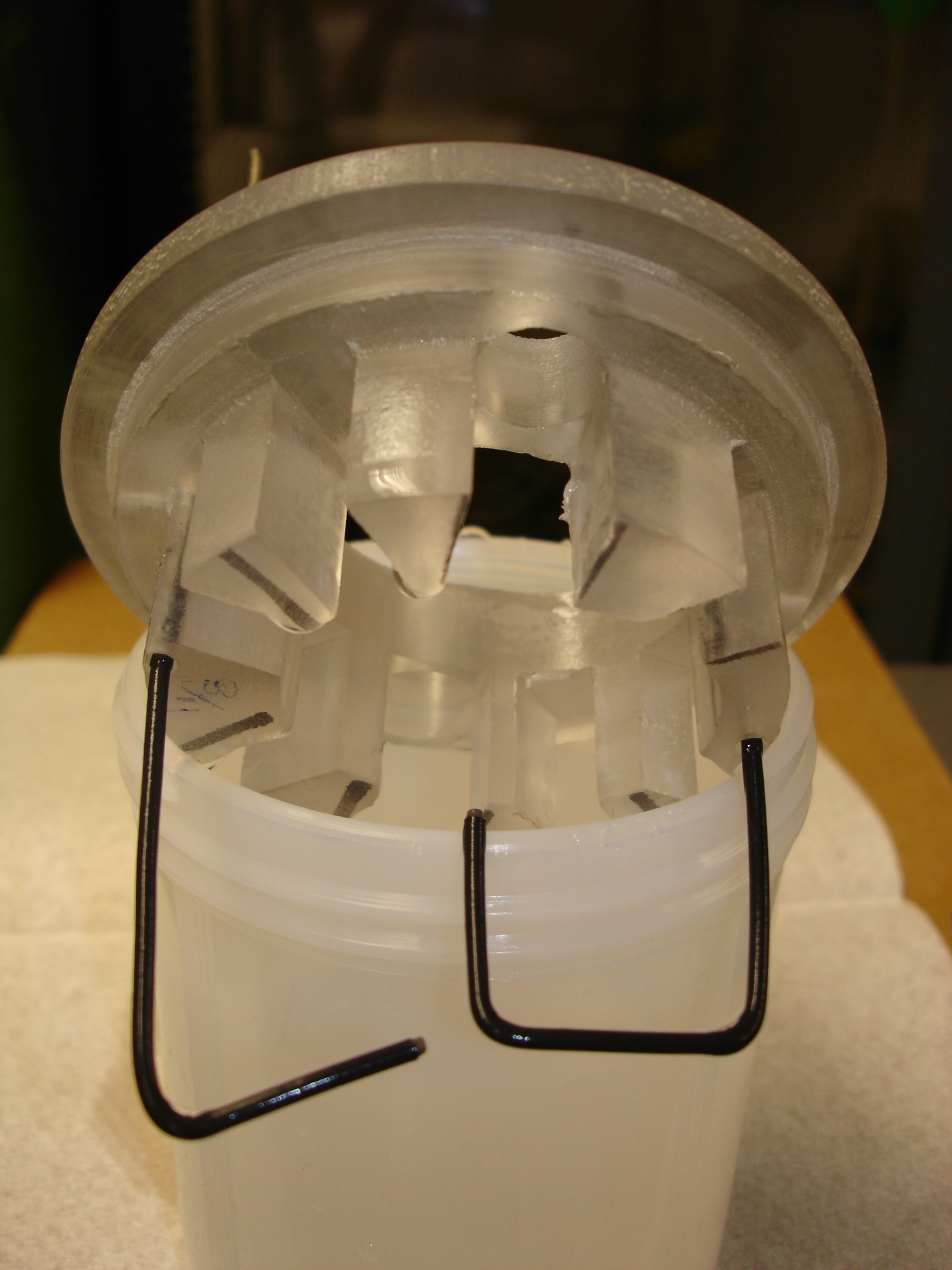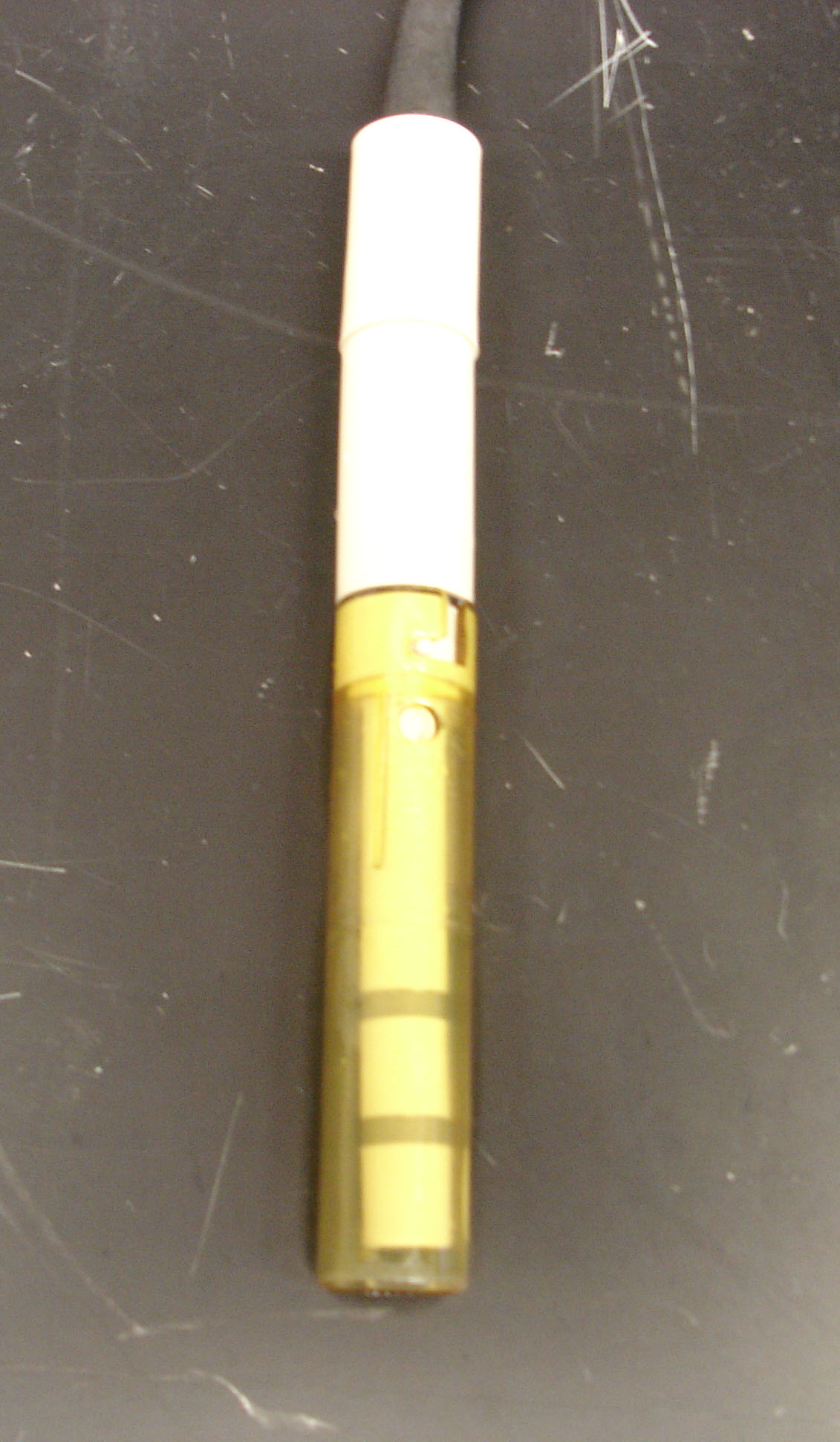

The apparatus consists of a few main parts: the motor/rotator, the cell, the voltmeter, the support stage, and the computer that runs it. Click on parts of the picture to learn more about the components.
The variable speed rotator is used to rotate the submerged sample in the cell. The motor/spindle apparatus used here is supplied by Pine Instruments. A dc input modulates the rotation rate of the ZetaSpin according to a sinewave input between 0 and 4000 rpm. The upper limit is chosen because the flow at the edge of a 25 mm diameter disk becomes turbulent above this value, approximately.
The VSR Speed Control is used to moderate the rotational speed of the submerged sample. It is electronically controlled by a dc input from the computer.
The cell is the center of the ZetaSpin. It comprises a teflon vessel and a machined polycarbonate top that allows insertion of the sample, supports reference electrodes and sensors, and provides baffling of the flow generated by the disk. Click on the picture to learn more.

The baffles damp the strong rotational motion above the plane of the sample, and they support probes and electrodes. The two electrodes measure the potential difference between the center and edge of the sample.

The sample support is a pvc cylinder threaded to mate with the spindle. The sample disk is affixed to the end of the pvc support. The sample support is a cylinder to move the opposite lateral surface above the plane of the liquid. Rotational motion induced in the annular space between the samaple support and baffles contributes negligible streaming potential to the measurement. Mica is shown here as the surface sample.

The pH probe measures the pH.

The conductivity probe measures the conductivity.

The Keithley nanovoltmeter is connected to the two electrodes submerged in the cell. It measures the potential difference between the center of the rotating disc and the radius.

The stand moves in the x, y, and z direction so that the sample can be centered over the electrode.
The computer runs the ZetaSpin from a Labview interface. The program varies the rotation speed of the sample and logs the streaming potential. Labview fits the modulated streaming potential to an expected functional form; the zeta potential is the only unknown. The computer reports and records the zeta potential that provides the best fit. A larger version of this image can be seen by clicking on the picture, allowing one to see the inputs and outputs in more detail.